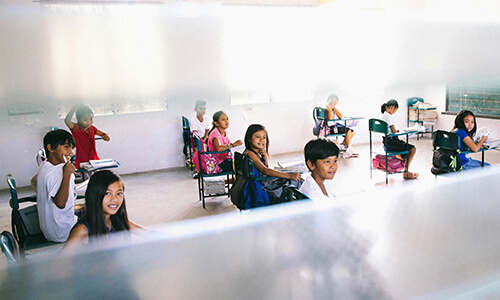It has been observed that the crime against women has been on the rise and with the recent events of violence against women, the society has to take action. As educators, we must recognize that the solution lies not only in holding marches and protests after such horrific events but also in proactively shaping the mindsets of young boys and men. By fostering respect, empathy, and equality from an early age, we can work towards a future where such atrocities are no longer a reality.
To address the issue effectively, we must first understand the underlying attitudes that contribute to violence against women. Many social stigmas still exist about the open display of affection. Young boys in at times grow up in environments where harmful stereotypes and toxic masculinity are normalized. These beliefs can lead to a sense of entitlement and disrespect towards women.
Educational institutions play a crucial role in promoting gender equality by integrating this important aspect into their core curriculum. And educators have the power to challenge these narratives and instil values of respect and equality. Here are some suggestions to consider, as you plan for transformational changes in students’ mindsets about gender:
1. Curriculum Development:

Schools should design curricula that include gender studies, highlighting the importance of equality and the contributions of various genders throughout history. This can help students understand the significance of gender equality from an early age.
- Diverse Perspectives: Integrate literature, history, and science that highlight contributions from all genders. Include works by female authors, scientists, and activists to provide a balanced view.
- Gender Studies Modules: Introduce modules that focus on gender issues, exploring topics such as gender roles, stereotypes, and the history of the gender equality movement.
2. Inclusive Teaching Practices:
Educators should employ teaching methods that promote inclusivity
and respect for all genders. This includes using gender-neutral language, providing diverse role models, and ensuring that all students feel valued and heard.
- Gender-Neutral Language: Use inclusive language that avoids gender stereotypes. For example, avoid the suffix “man” so typically added to many community helper roles. Use terms like “firesaver” or just “police” or “cable agent”, etc.
- Diverse Role Models: Display images and stories of diverse role models in the classroom, showcasing individuals from various genders and backgrounds who have made significant contributions to society.
3. Critical Thinking and Discussion:

Schools can encourage critical thinking
by facilitating discussions around gender stereotypes, biases, current news articles reporting gender disparity of crimes related to gender, and deep-rooted societal norms. This helps students to question and challenge existing inequalities.
- Debates and Discussions: Facilitate debates on gender-related topics, encouraging students to explore different viewpoints and develop critical thinking skills.
- Case Studies: Use real-life case studies to discuss gender issues, allowing students to analyze and propose solutions to challenges related to gender equality.
4. Encouraging Participation
Mix boys and girls to work on projects together. Explore gender concepts and roles from different communities. Help students identify instances of gender bias, through awareness activities or historical events, laws and cultural changes.

- Equitable Participation: Ensure that all students have equal opportunities to participate in discussions and activities. Use strategies like “think-pair-share” to give everyone a chance to contribute.
- Group Work Dynamics: Monitor group work to ensure that all voices are heard and that no one dominates the conversation. Rotate roles within groups to promote collaboration.
5. Extracurricular Activities:
Institutions can promote gender equality through clubs, workshops, and events that focus on empowerment, leadership, and advocacy for all genders. This provides
students with practical experiences in promoting equality.

- Support the formation of clubs: focused on gender equality, such as a Gender Equality Club or a Women’s Empowerment Group, where students can engage in advocacy and awareness activities.
- Workshops and Guest Speakers: Organize workshops or invite guest speakers who specialize in gender studies or advocacy to share their experiences and insights with students.
6. Training for Educators:
Teaching can be a powerful force for social justice. Providing professional development for teachers on gender sensitivity and inclusivity can equip them with the tools needed to foster a supportive learning environment.
- Training Sessions: Participate in professional development sessions focused on gender sensitivity and inclusive teaching practices to better equip educators with the necessary skills.
- Collaborative Learning: Encourage teachers of varied genders to collaborate and share best practices for promoting gender equality within their classrooms.
7. Parental and Community Involvement:

Schools can collaborate with parents and the community to raise awareness about gender equality, creating a supportive network that reinforces these values outside the classroom.
- Parent Workshops: Host workshops for parents on the importance of gender sensitivity and how they can support these values at home.
- Community Projects: Engage students in community service projects that promote gender equality, such as partnering with local organizations that support women’s rights.
8. Creating a Safe Space:

Safe spaces are environments where students have the freedom to make mistakes without lasting judgment or ridicule and where they can engage in critical, honest, civil, and challenging discussions about sensitive topics.
- Open Dialogue: Foster an environment where students feel safe discussing gender issues. Establish ground rules for respectful communication and encourage empathy and understanding.
- Anonymous Feedback: Provide opportunities for students to give anonymous feedback about their experiences related to gender sensitivity in the classroom, allowing teachers to address concerns effectively.

Together, we can foster a generation that values and upholds the dignity of every individual, ensuring that such tragedies become a thing of the past. By embedding these principles into the core curriculum and by implementing these strategies, educational institutions can significantly create a more inclusive learning environment that promotes gender sensitivity and equality among students, thereby contributing to a safer and more equitable society.
Let us commit to this vital work, not just for the sake of our girl students, but for our boy students as well, as we strive for a world where everyone can live free from fear, bias and violence.


